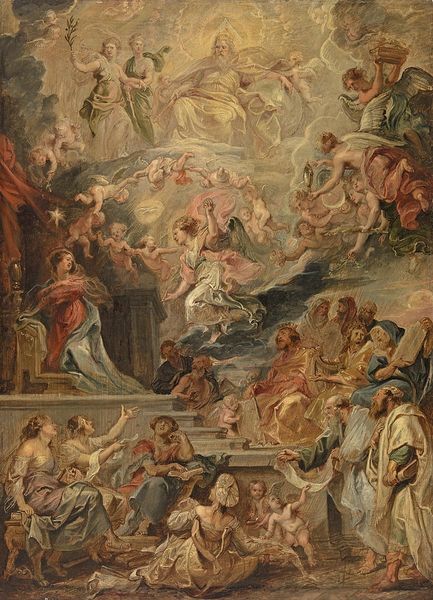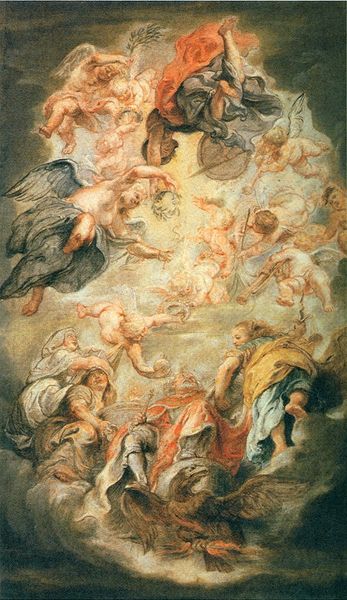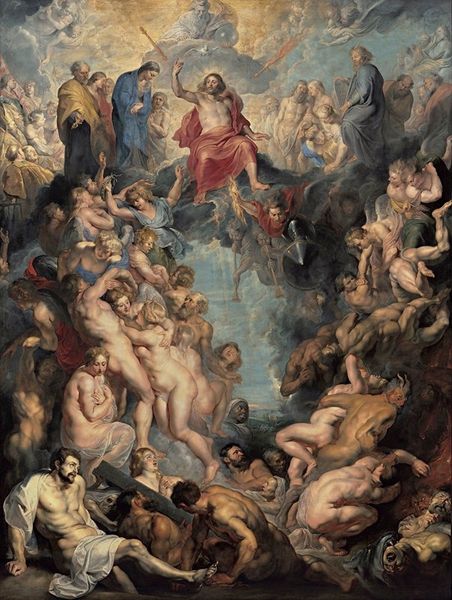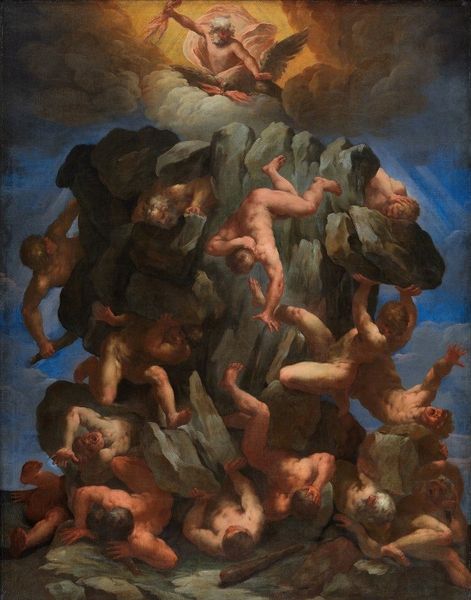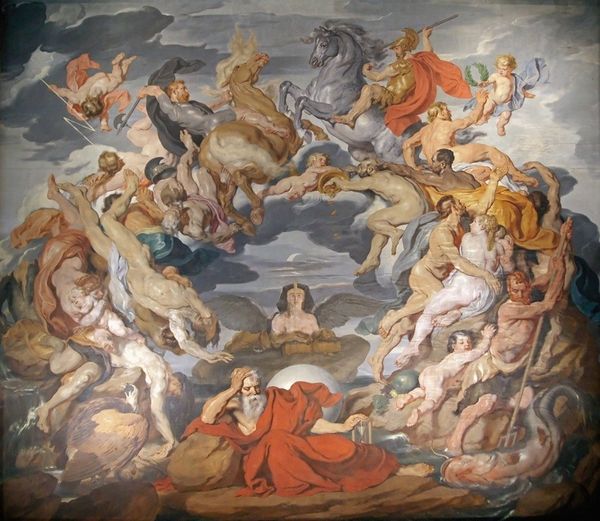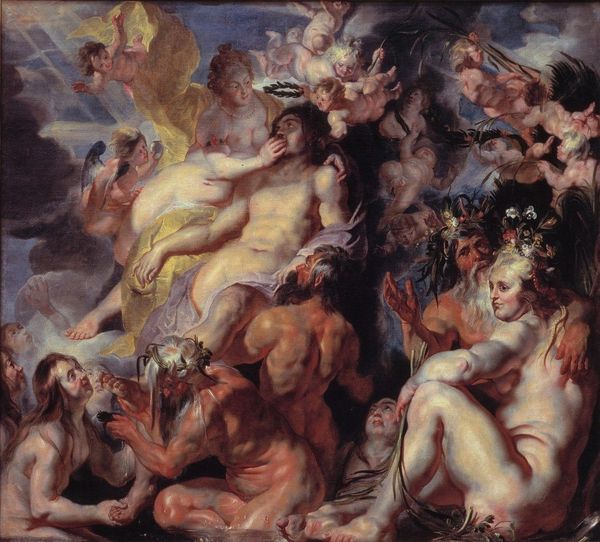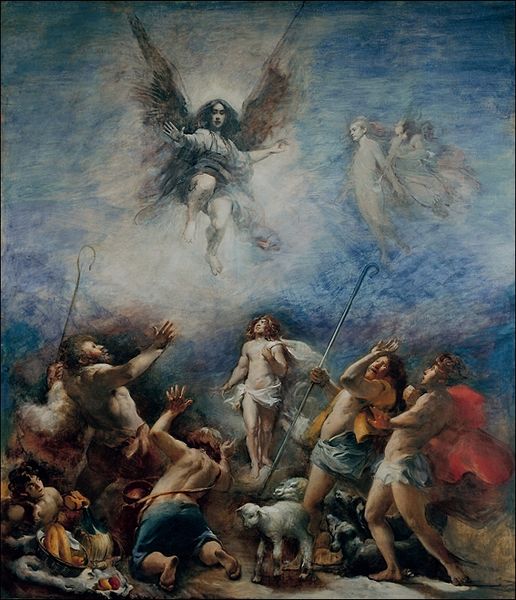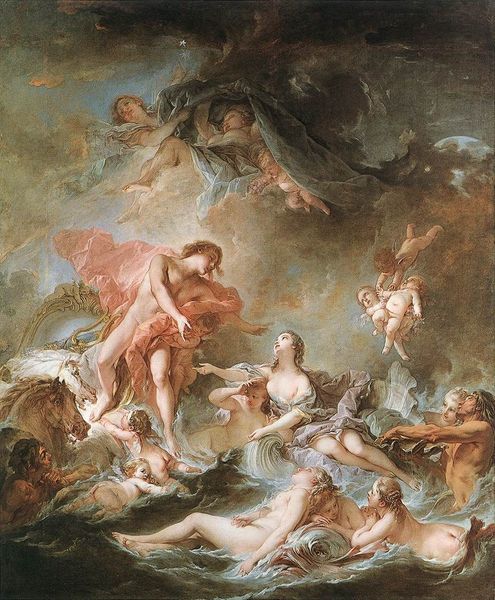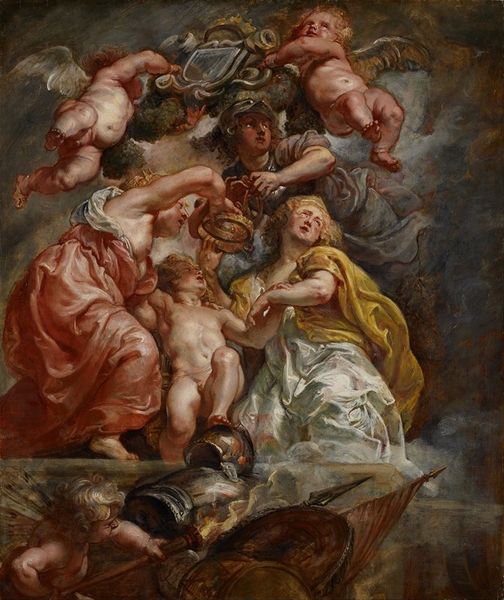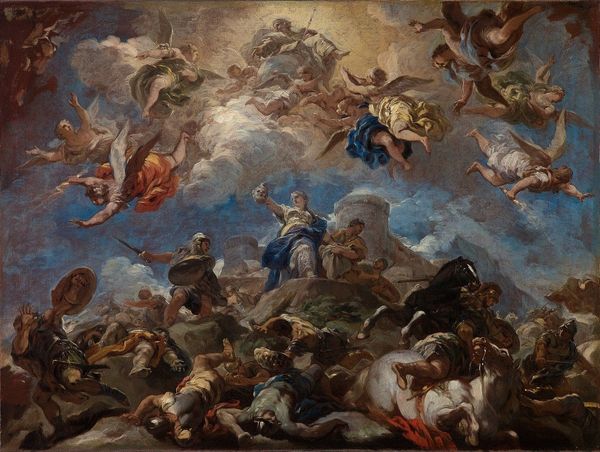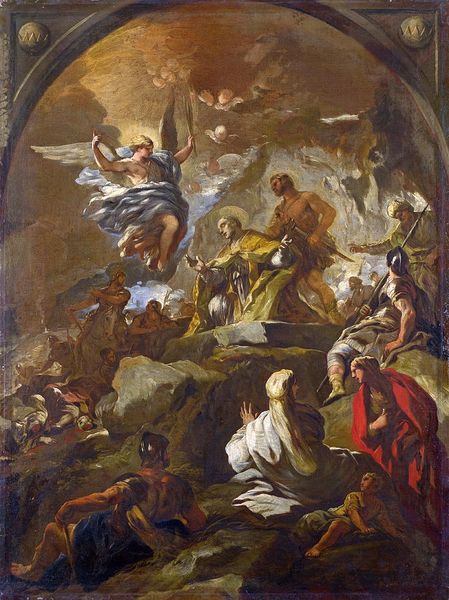
oil-paint
#
allegory
#
baroque
#
oil-paint
#
figuration
#
oil painting
#
history-painting
Copyright: Public Domain: Artvee
Editor: Here we have Peter Paul Rubens's oil painting, *The Virgin as the Woman of the Apocalypse*, created around 1623. The composition feels very dynamic with figures swirling around. What sociopolitical narratives do you see embedded in this work? Curator: It’s fascinating how Rubens situates this religious scene within the political anxieties of the time. Consider the context: the Counter-Reformation. How does the depiction of the Virgin, triumphant over chaos, serve as an allegory for the Catholic Church's resilience against Protestant challenges? Editor: That’s a really interesting angle. So the Virgin's victory is not just a religious one, but also a commentary on power structures? Curator: Precisely. Notice how the darkness and the monstrous figures are pushed down, subdued by the divine light surrounding Mary. Think about whose voices were suppressed during this era, especially women and those who dissented from established religious norms. Where might we find traces of their experiences mirrored, or perhaps resisted, within the artwork? Editor: I hadn’t considered it that way. I was focused on the technical aspects of the Baroque style. But now I see a potential connection to feminist interpretations; Mary as a symbol of female empowerment against the patriarchal forces represented by the monsters. Curator: Indeed. By considering the social, political, and even gendered implications, this artwork becomes a powerful lens through which to examine a turbulent period in European history and its continuing effects on social power dynamics. Editor: It definitely makes me look at Baroque art in a whole new way. The power of allegory to encode historical events! Curator: Absolutely, and by recognizing the intersecting narratives of religion, power, and identity, we get a much deeper understanding of the art’s lasting relevance.
Comments
No comments
Be the first to comment and join the conversation on the ultimate creative platform.
